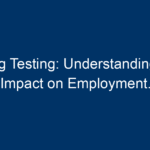In today’s society, education goes beyond the walls of the classroom. Service learning has emerged as a transformative approach that intertwines academic training with community service, providing opportunities for students to apply what they learn in real-world settings. This unique blend not only equips students with practical skills but also fosters a deep sense of civic responsibility and community engagement. In this article, we will delve into the concept of service learning, explore its benefits, ways to implement effective programs, and share actionable insights to maximize its positive impact on both students and communities.
What is Service Learning?
Service learning is a pedagogical strategy that combines community service with instruction and reflection. It integrates meaningful service with curriculum objectives, promoting a mutually beneficial relationship between students and the communities they serve. Unlike traditional volunteer work, service learning is structured and guided by specific academic goals, allowing students to gain a deeper understanding of the subjects they study while actively contributing to societal needs.
Key Components of Service Learning
- Community Engagement: Students connect directly with local organizations or community members, allowing them to understand and address real-world issues.
- Curricular Integration: Projects are closely linked to academic subjects, enhancing learning through hands-on experiences.
- Reflection: This is a critical component where students analyze their experiences, connect them to their academic work, and articulate what they’ve learned.
- Reciprocal Benefit: While students gain skills and knowledge, communities benefit from the services and support provided. This creates a sustainable partnership.
The Benefits of Service Learning
1. Enhanced Learning Outcomes
Research shows that service learning enhances student learning by promoting active participation. Engaging in projects helps students retain information better and develop critical thinking and problem-solving skills. For instance, a student involved in a project addressing local food insecurity can apply social studies concepts, learn about nutrition, and develop advocacy skills all at once.
2. Development of Life Skills
Service learning encourages the development of essential life skills like teamwork, leadership, and communication. Students learn to collaborate with diverse groups of people, work towards common goals, and navigate challenges, all of which are valuable in both personal and professional contexts.
3. Increased Civic Engagement
Students engaged in service learning often cultivate a lifelong commitment to community service. By experiencing the impact of their contributions, they become more aware of social issues and are motivated to advocate for change. This heightened civic engagement contributes to the development of informed and responsible citizens.
4. Strengthened Community Ties
Service learning helps bridge the gap between educational institutions and local communities. Through partnerships, schools can better understand community needs and tailor their programs accordingly. This collaboration fosters a sense of belonging and shared responsibility among students and community members alike.
Implementing Effective Service Learning Programs
1. Identify Community Needs
Before launching a service learning initiative, it’s crucial to partner with local organizations to identify pressing community issues. Engaging with stakeholders ensures that the projects align with both academic objectives and community needs. Conduct surveys or hold discussions with community leaders to pinpoint areas where students can make a meaningful contribution.
2. Design Thoughtful Curriculum Integration
Incorporating service learning into the curriculum requires intentional planning. Educators should select projects that directly connect with learning objectives. For example, a science class may focus on environmental sustainability through a project that involves cleaning up local parks or conducting water quality tests in nearby streams.
3. Foster a Culture of Reflection
Reflection is vital in service learning. Educators should design structured reflection activities that encourage students to think critically about their experiences. This could involve discussions, journals, or presentations where students articulate their learnings and insights. Reflections help solidify the connection between service and academic content.
4. Build Sustainable Partnerships
Establishing long-term partnerships with community organizations is key to successful service learning programs. This not only provides ongoing opportunities for students but also ensures that communities benefit from consistent support. Collaborate with organizations that share similar values and goals, creating a win-win situation for all parties involved.
5. Evaluate and Share Outcomes
To measure the effectiveness of service learning programs, establishing evaluation metrics is essential. Collect data on student outcomes, community impact, and overall program effectiveness. Share these findings with stakeholders to celebrate successes, gather feedback, and promote continued improvement.
Challenges in Service Learning
Despite its numerous benefits, implementing service learning can present challenges:
1. Institutional Resistance
Some educational institutions may be hesitant to adopt service learning due to rigid curricula or a lack of understanding of its benefits. It is essential to advocate for an integrated approach that highlights the positive outcomes of such programs.
2. Time Constraints
Balancing academic requirements with service learning projects can be challenging. Educators need to carve out time within the curriculum, ensuring that both service and academic goals are met.
3. Finding Suitable Projects
Locating appropriate service opportunities that match curriculum standards can be difficult. Ongoing collaboration with community partners is crucial to ensure relevant and impactful service experiences.
Actionable Insights for Students and Educators
For Students:
- Seek Opportunities: Look for service learning projects within your school or community. Engage in activities that resonate with your passions and career aspirations.
- Reflect on Your Experience: Take time to write down your thoughts and observations about your service activities. Reflecting helps deepen your understanding and appreciation of the process.
- Advocate for Change: Use your experiences to raise awareness about the issues you’ve encountered. Share your insights with peers and the wider community to inspire collective action.
For Educators:
- Design Interdisciplinary Projects: Collaborate with colleagues from different subjects to create interdisciplinary service learning projects; this enhances learning and broadens student perspectives.
- Engage Community Partners Early: Establish connections with community organizations at the program’s inception to ensure alignment of goals and needs.
- Cultivate a Supportive Environment: Encourage students to take risks, ask questions, and express themselves throughout their service learning journey. A supportive environment fosters creativity and innovation.
Conclusion: The Future of Service Learning
Service learning stands at the crossroads of education and community engagement, creating a powerful platform for social change and personal growth. By providing students with opportunities to connect their learning to real-world challenges, service learning not only enriches the educational experience but also cultivates a generation of empathetic, engaged citizens.
The road to effective service learning is filled with challenges, but the rewards are profound. As we continue to explore and implement service learning initiatives, we must embrace the transformative potential it holds for students and communities alike. By committing to this integrated approach, we can foster a culture of active citizenship and create a more equitable, compassionate world.
Join the Movement
Whether you’re a student, educator, or community leader, consider exploring the myriad opportunities that service learning can offer. Together, let’s harness the power of action to create a brighter future for all.




